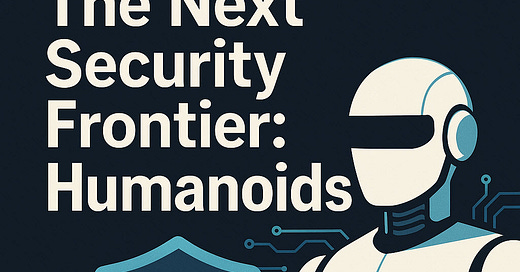Welcome to the first in a series of big-brained ideas. This is an area that I’ll be putting some focus on in the near future and plan to share here. In my opinion, this will become a huge area of both excitement and concern and preparation is necessary. But it will also become one of the biggest areas of opportunity in an AI-infused future for those willing to pivot to something new and unknown. Stay tuned for more.
The humanoid robot market is projected to be massive in the coming decades. Estimates suggest it could surpass $5 trillion by 2050, with over 1 billion humanoids in use, primarily for industrial and commercial applications. Adoption is expected to accelerate in the late 2030s, driven by technological advancements and regulatory support.
In the shorter term, the market is forecasted to reach $38 billion by 2035, fueled by AI progress and declining manufacturing costs. Companies like Tesla, Xiaomi, and Meta are investing heavily in humanoid robotics, with applications spanning logistics, automotive, and even household assistance.
Cybersecurity for humanoid robots is becoming a critical concern as these machines integrate into workplaces, homes, and even security roles. Researchers warn that cybersecurity hasn't been prioritized enough in robot design, leaving vulnerabilities that could be exploited. A cyberattack on a humanoid robot could lead to physical harm or property damage, making security a top priority.
The broader robotics market is projected to reach $189 billion by 2027, with increasing investments in securing these systems. As humanoid robots become more autonomous and connected, expect stronger regulations and security frameworks to emerge.
While many companies are developing humanoid robots, security-focused efforts are still emerging. Some major players in robotics, like Boston Dynamics, Agility Robotics, and Tesla, are integrating security measures into their designs, but dedicated cybersecurity solutions for humanoid robots remain a growing field.
Given the increasing risks of cyberattacks on autonomous systems, expect specialized security firms to enter the space soon.
Careers
A career in humanoid robot security requires a blend of technical expertise, cybersecurity knowledge, and robotics engineering. Here are some key skills to develop:
Technical & Cybersecurity Skills
Cybersecurity Fundamentals – Understanding network security, encryption, and ethical hacking to protect humanoid systems.
AI & Machine Learning – Knowledge of AI-driven security protocols and anomaly detection.
Embedded Systems Security – Securing firmware and hardware components of humanoid robots.
Penetration Testing – Identifying vulnerabilities in robotic systems before attackers do.
Robotics & Engineering Skills
Robotics Programming – Proficiency in languages like Python, C++, and ROS (Robot Operating System).
Sensor & Perception Systems – Understanding how humanoid robots process environmental data.
Autonomous Navigation Security – Ensuring safe movement and decision-making in dynamic environments.
Regulatory & Ethical Considerations
Compliance & Risk Management – Familiarity with security regulations for autonomous systems.
Human-Robot Interaction Ethics – Addressing privacy concerns and responsible AI deployment.
TLDR
Like most emerging technology these days, its early days, but in this blog post we've explored the market and security landscape for humanoid robots, touching on their projected $5 trillion industry potential by 2050 and the increasing need for cybersecurity solutions. While security hasn't been a primary focus yet, concerns about AI-driven threats, physical vulnerabilities, and regulatory compliance are pushing the field forward.
We discussed skills needed to enter humanoid robot security—ranging from cybersecurity fundamentals and robotics programming to AI-driven threat detection and ethical considerations. Then, we explored how to craft messaging that frames security in an urgent, strategic, and visually impactful way, ensuring trust and adoption.




